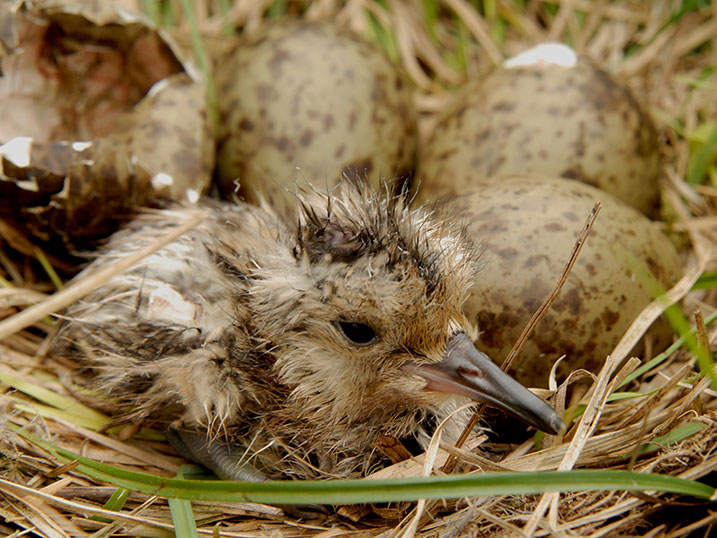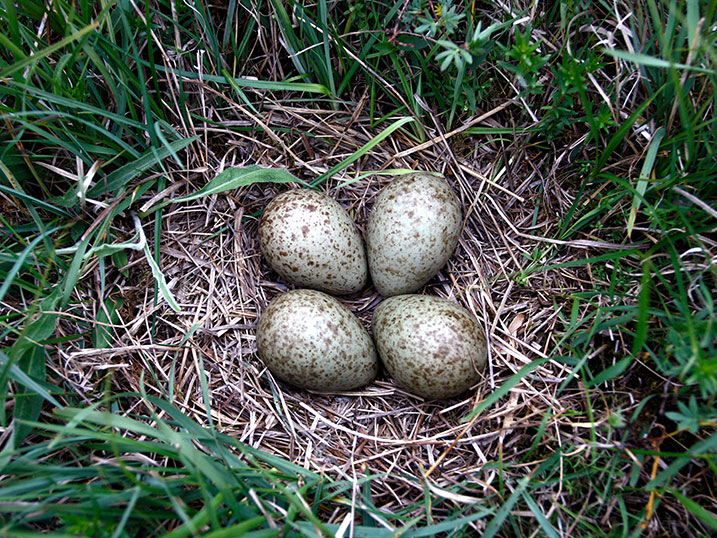Curlews in crisis - now one of Britain's most endangered birds
The curlew is now one of Britain’s most endangered birds. we’ve lost half of our breeding birds in the past 20 years, and the trend shows no sign of abating. Author, producer and curlew expert Mary Colwell explores how we’re leading efforts to make sure this rare wading bird’s evocative ‘curlee’ call does not become just a memory.
Curlew cry no more to the air, Or only to the water in the West.
This is the first stanza of WB Yeats’ poem of passion and loss, ‘He Reproves the Curlew’. Yeats uses the evocative cry of Britain’s largest wading bird as a motif for sorrow and yearning, and he’s not alone. Many writers have turned to the sound of curlews to express emotions we find hard to put into words.
The curlew in literature
Most literature refers to the ‘curlee’ call, a heart-rending, piercing cry that fires across the landscape, inhabiting the mind long after the bird has flown. It encapsulates the sense of wild, open space and aloneness. Even a cursory exploration of literature, poetry, music and art reveals curlews have played a significant role in our cultural life for generations. From Dylan Thomas to Benjamin Britten, the Eurasian curlew has lit many creative fires. On the other hand, the bubbling song, most often heard in spring, is an ecstatic trilling that rises through the harmonic scale in a burst of energy. The renowned politician and ornithologist Edward Grey found it joyful and full of hope.
Of all the bird songs or sounds known to me there is none that I would prefer than the spring notes of the curlew… On a still day one can almost feel the air vibrating with the blessed sound.
Spotting the curlew
In winter, British curlews congregate around our estuaries and coasts, where they are joined by more than 150,000 birds from northern Finland, Germany and Scandinavia. As many as 100 wander together in ‘herds’ through wet fields and muddy ground. This is the best time of year to observe the Cyrano de Bergerac of the bird world.
Its body is about the size of a mallard duck and supported on long, stilt-like legs. Its plumage is mainly brown and grey, with a white rump. Its stretchy neck supports a small head that tapers into an astonishingly long, downward-curving bill. Up to 15cm long in females and a little shorter in males, this arcuate beak is reflected in the bird’s Latin name, Numenius arquata, which means new-moon, bow-beaked bird.
Its beautiful, sculptural form is finely adapted to feeding in mud. When plunged into this dark, damp world, the sensitive bill tips feel for creatures buried in its depths.
Now is your chance to take some binoculars, stand a little way off and marvel at the wonderful winter spectacle of curlews feeding at our coastal reserves.
As winter draws to a close, curlews take flight and European birds head home. Our native birds travel inland to breed on farmland, upland wet pasture and moorland. Each pair sets up a territory that they defend with vigour. By the end of the breeding season in late July or August, their chicks will hopefully have survived to fledge, and all the birds will return to the coast once more.

Nature’s barometer
Curlews are fascinating waders in their own right, but they are important for another reason. As their yearly travels take them from the coast, through farmland to upland pastures, and on to open moorland, they are birds that make use of most of the landscapes of the UK.
If curlews are thriving, it is because many factors across the country are working. Conversely, if they are struggling and numbers are falling, it’s a clear indication that all is not well.
Sadly, over the past few decades, the message has been coming across loud and clear from Britain’s curlews that things are far from good. These iconic birds are in serious decline. We have lost half of our breeding birds in the past 20 years, and the downward curve shows no sign of abating.
The official estimate for breeding pairs in the UK is 66,000, but many people believe the actual number is much lower, maybe only half that. Curlews are in such serious danger that they are now considered the most pressing bird conservation priority in the UK.
Why are curlew numbers declining?
The main pressures bearing down on this elegant bird are habitat loss and predation. Large-scale landscape changes during the 20th century, such as changes to farming practices, forestry and drainage, have been disastrous for ground-nesting waders like curlews. In addition, predators such as foxes and crows are doing well in our intensively managed countryside, and their numbers have increased. Today, we have the densest population of crows in Europe and the second-densest population of foxes – and both of them eat curlew eggs and chicks.
Over the past few decades, the British countryside has become a difficult and dangerous place for curlews to raise young. Older birds are dying off and there are precious few young ones to take their place. The result is a precipitous decline.
How WWT are helping
Help, though, is at hand. WWT is at the forefront of plans to help curlews across farmed and lowland areas of England. On World Wetlands Day in 2017, Slimbridge hosted the first Southern English Curlew Workshop. More than 100 conservationists, farmers, landowners, policymakers, scientists and birdwatchers came together to plan the best way to help the few, isolated groups of curlews still surviving in the south of England.
Dr Geoff Hilton, WWT’s head of conservation science, was one of the organisers. ‘It was an honour to hold this workshop at Slimbridge and for us to play a leading role in directing plans to help curlews. They are such an important icon of the British countryside and so greatly loved. It would be a tragedy if we let them slip away.’
Curlew rescue plan
One of the main results of the workshop day was the establishment of the Curlew Forum. This is a small team of curlew specialists who help coordinate a variety of groups throughout southern England that are working on curlews by publicising and disseminating research and practical advice.
The Curlew Forum is a new way of doing conservation,’ says Geoff. ‘It’s collaborative and draws on a diverse range of expertise from different sectors. And we’re right at its heart.
The most important work that needs to be done is to make farmland friendlier for returning curlews in spring. Already the curlew groups have been working closely with farmers and the wider community to trial different ways of protecting nests. In some places, electric fencing is being used to deter predators.

In others, farmers are being persuaded to wait to cut their hay until curlew chicks have almost fledged. In areas where the birds nest on public ground, signs have been erected to educate people about the disturbance dogs can cause. One of the ways WWT is bringing its specialist knowledge to bear is through ‘headstarting’ curlew chicks in places where populations are critically low and under great pressure, such as the farmland of Shropshire, on Dartmoor and in the hay meadows of Gloucestershire, for example.
‘Headstarting helps chicks through a perilous period in their development, so it’s a good way of keeping curlew populations afloat until we can start to put right the other pressures the birds are facing, such as restoring their habitat,’ says Geoff.
The crisis facing our curlews is serious, but WWT is the perfect organisation to pull together efforts to conserve lowland curlews and take the lead on ensuring their recovery. At last, lowland curlews have a ray of hope for the future.
This article by Mary Colwell was originally published in the Oct/Dec 2018 issue of Waterlife.
Find out more about joining WWT
Help support curlews by giving to our appeal
Read the April/June 2018 issue of Waterlife



